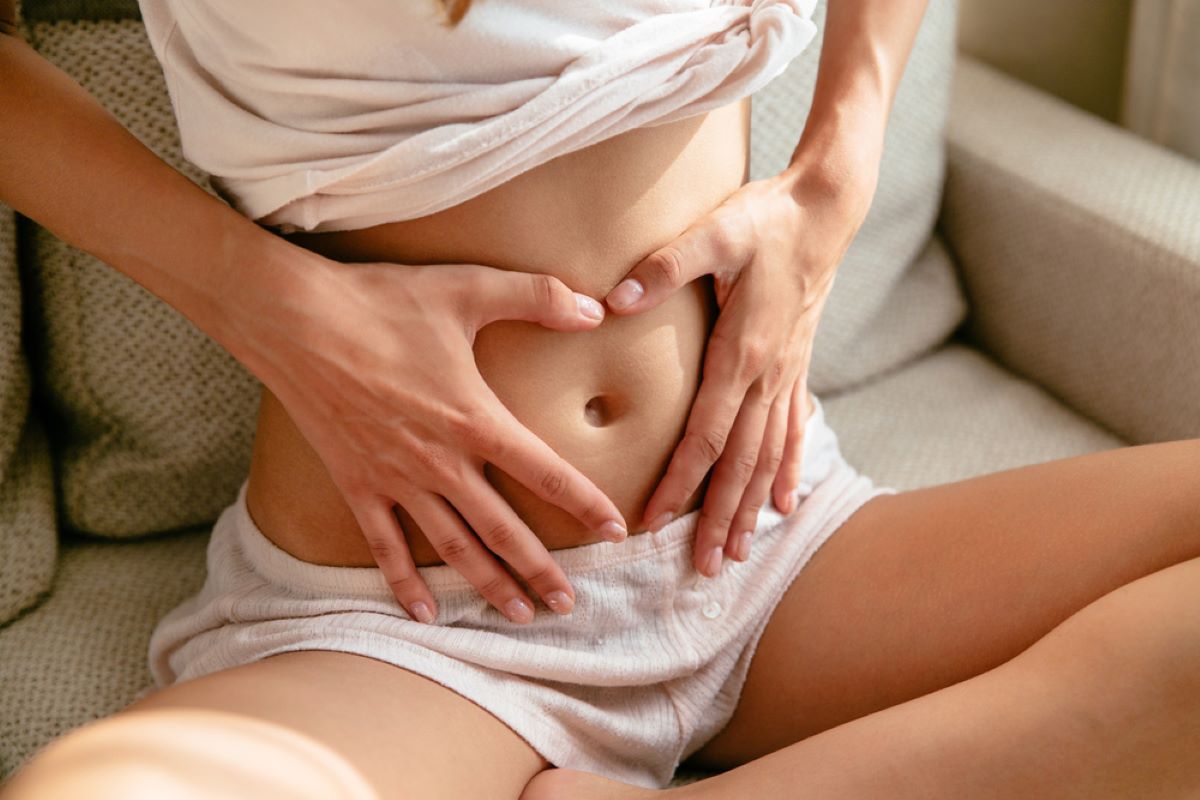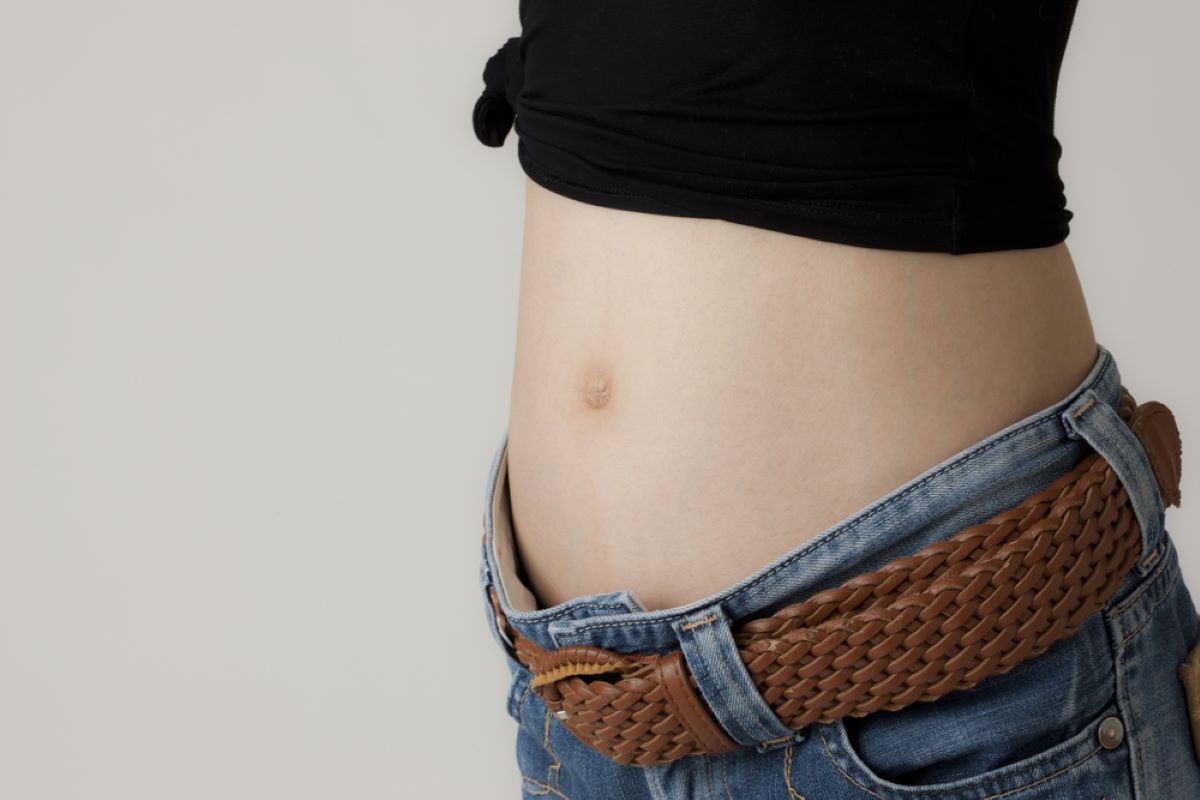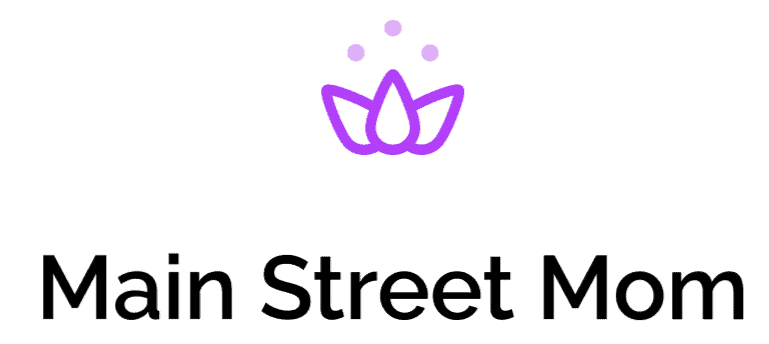Getting ready for work, pulling our pants up, and noticing they’re a little too snug might mean you’re gaining weight or about to get your period. Or, heaven forbid, your partner and you might not have been as cautious as you thought you were over the past few weeks. Pregnant belly vs. fat belly: how to tell the difference!?
Contrary to what men might think, women aren’t always sure they’re pregnant.
Whether they’re PMSing, going through hormone changes, or experiencing mood swings that urge them to eat everything within reach, there is a multitude of reasons we might suddenly wake up with a big belly.
Worry not, pregnant bellies are different from fat bellies, and we’re about to get the lowdown on which one is which. Read more down below!
Pregnant belly vs. fat belly: What are the differences?
1. Pregnant bellies are harder than fat bellies

When you notice your growing belly, you might wonder “Am I pregnant or am I fat!?” But, when you touch your belly you’re guaranteed to notice the firmness.
Pregnant bellies are harder than fat bellies because the baby takes up space and presses against your organs. Fat bellies, on the other hand, are softer because they’re surrounded by a layer of fat. And, fat can be easily pinched, played with, and moved around, which contributes to the difference between the two, too.
That said, we do need to underline that non-pregnant bellies can occasionally be hard, too, depending on the type of fat that’s hidden underneath.
2. Pregnant bellies grow around the lower abdomen, and fat bellies grow around the upper abdomen
Before you start freaking out and FaceTiming your partner at 3 a.m. because you noticed you’re running out of abs (you’ve got, like, one ab left), remember to observe your belly beforehand.
While there’s a chance your belly might be growing because you’re pregnant, don’t forget there are many other reasons this might be happening. Observe your body; pay attention to whether you appear bigger around the lower or the upper abdomen.
When you’re pregnant and your baby starts growing, your uterus creates a bulge by pressing on the walls of your belly. Because of that, the lower part of your belly appears bigger.
But, if you’ve delved a little too deeply into the cookie jar, you’re more likely to accumulate fat around the upper part of your belly.
3. Pregnant bellies are round, and fat bellies are textured

Another pregnant belly vs. fat belly difference is that the former resembles a balloon.
When you’re pregnant, your stomach expands to accommodate the baby. And, the expansion happens around the lower abdomen because that’s where the uterus usually resides. Actually, pregnant bellies are bigger, harder, and rounder than fat bellies because they’re carrying a child who is pushing against the walls.
On the other hand, when you’re overweight or obese, your stomach starts to resemble the Michelin Man. Fat bellies become softer, squishier, and surrounded with rolls. Belly rolls also often come with softer thighs and rounder shoulders to assure that you’re probably not pregnant.
4. Pregnant bellies are heavier than fat bellies
This comes as no surprise since there’s a growing baby inside a pregnant belly.
When you’re pregnant, you might become more sluggish, slow, and weary than before. You might experience backaches because of how heavy your belly gets. You might even notice stretchmarks because of how much your skin stretches to accommodate your growing belly.
When considering this difference between the two bellies, you’ll likely be able to ease your worries and figure out whether or not you’re pregnant. But, on the off chance that you don’t, take a peek at some of the other symptoms that might be of assistance.
What other symptoms come with a pregnant belly?
1. Missed periods
A bigger belly might be a sign that you’re pregnant, but that doesn’t mean that you aren’t going to experience other symptoms, too. A missed period, for example, could be one of the signs.
And, when you don’t get your period for more than a week after the expected date, it’s best to take a pregnancy test. Women with regular menstrual cycles should notice the change right away, but those with irregular menstrual cycles might have a harder time doing so.
2. Nausea, morning sickness, and memory problems

Nausea and morning sickness might be even better proof of pregnancy considering they’re known to start as early as two weeks after conception.
Now, despite the name, morning sickness can occur at any time of the day or night. Coupled with that, women are known to experience nausea and/or morning sickness throughout the entire pregnancy, while others don’t experience them at all.
Problems with your memory might also be an indicator that you’re pregnant. Pregnancy brain and fatigue are quite common among pregnant women, even though these symptoms typically happen a little later down the line.
3. Spotting
Oh, even though a bigger belly might cause you concern over whether or not you’re pregnant, spotting’s guaranteed to sway you the other way.
Of course, women aren’t strangers to misinterpreting the symptoms of spotting because they’re similar to periods. Light spotting, cramps, and headaches are, however, common among pregnant women at the beginning of pregnancy.
4. Nipple changes
If you’re still struggling to differentiate between a pregnant belly and a fat belly, you might need to take a peek at your nipples.
When you’re pregnant, your nipples can change color and become slightly darker than they were before you were pregnant.
And, you might even notice a slight discharge which corresponds with early signs of milk production. Additionally, you might experience some soreness or tenderness around the nipple area, too.
5. Mood changes
Mood changes are common throughout pregnancy and normally occur due to stress, fatigue, metabolism changes, and hormone changes (thanks, estrogen and progesterone!) Mood swings are a part of pregnancy, and you shouldn’t be embarrassed about them.
If you’re showing most of these pregnancy symptoms and your neighbor’s baby starts rubbing your belly, you might want to schedule an appointment with your doctor.
What other symptoms come with a fat belly?

1. A rounder, softer appearance of the body
Don’t worry, you’re not the only one trying to understand what’s going on with your body by overthinking and overanalyzing every change. Depending on the circumstances, you might think you’re pregnant because your belly appears fuller and rounder than before.
But, there’s a difference between a pregnant belly and a fat belly. Before you purchase a pregnancy test, observe your body – a rounder, softer appearance of the body alongside a fuller belly might mean that you’ve gained weight without noticing.
A pregnant belly, especially during the first few weeks, shouldn’t affect the appearance of the rest of your body. And, the volume around your body and belly should be different depending on whether or not you’re pregnant.
2. A changed hip-to-waist ratio
Sure, a changed hip-to-waist ratio might mean you’re growing a baby and that’s why your waist appears to be bigger than your hips. But, your belly shouldn’t become bigger during the first few weeks after conception, which means you should have the same or similar hip-to-waist ratio as before.
We don’t suggest basing your determination on this measurement. But, if you’ve been measuring your body and tracking your progress for a while already, you might notice that you’re fuller than before and decide to take a test or schedule an appointment with your doctor.
3. Rolls on rolls
At the end of the day, when you notice rolls on parts of your body other than your belly and you get a negative pregnancy test, know that you aren’t pregnant. A fat belly is generally accompanied by soft arms, squishy tights, and a bunch of doughy rolls (which sound delicious, by the way!)
And, even though you’ll put on a little extra weight when pregnant, you aren’t going to notice the weight right away – pregnancy rolls come after a few months rather than weeks and they aren’t positioned around the belly.
How to be 100% sure which one’s which?

Schedule an appointment with your doctor. That’s the best way to find out what’s actually going on.
If you’re struggling to gauge whether or not you’re pregnant, take a pregnancy test and contact your doctor. We highly recommend not drawing conclusions based on the appearance of your body because there are numerous explanations for why you might have grown a belly over a while.
Even though a growing belly might point toward pregnancy, there are better ways to determine whether or not you’re carrying a child. Especially when you know you’ve been devouring chocolate cakes, cinnamon buns, and Starbucks Lattes for a while now, right?
